Adding a mosaic kitchen backsplash is a fantastic way to infuse color, texture, and personality into the heart of your home. Mosaic tiles come in a variety of materials—glass, ceramic, metal, stone, or even a mix—that can complement any style, from modern to rustic. Because each tile is part of a larger pattern, a mosaic backsplash has a unique, customized look. The intricate designs not only add visual appeal but also serve a practical purpose by protecting the wall from splashes and stains. Whether you choose small geometric shapes, abstract patterns, or detailed pictures, a mosaic backsplash can transform your kitchen.
One of the key benefits of mosaic tile backsplashes is their versatility. You can choose from various tile sizes, shapes, colors, and materials, allowing you to design a backsplash that reflects your aesthetic preferences. Glass tiles, for instance, add brightness and depth to a kitchen by reflecting light, which makes the space look more open and vibrant. Ceramic and porcelain tiles are durable and come in countless colors and patterns. Stone tiles, like marble or travertine, bring a more natural, earthy feel, while metal tiles add a sleek, industrial vibe. Combining different types of tiles can also create a layered effect, making the backsplash truly one-of-a-kind.

Installation of a mosaic backsplash requires careful planning and precision. It’s essential to measure the area accurately and select tiles accordingly. Depending on your skill level, you may choose to handle the installation yourself or hire a professional. When installing mosaic tiles, start by applying a layer of tile adhesive to the wall, then carefully place the tiles one by one or in sheets, if they come pre-arranged. Using a tile spacer between tiles ensures even spacing. Once the tiles are in place and the adhesive has dried, grouting fills in the spaces between the tiles, creating a finished, seamless look. Patience is essential, as rushing the process can lead to misaligned tiles or a patchy grout job.
Mosaic backsplashes offer practical advantages as well. They’re relatively easy to clean, making them perfect for high-traffic areas like the kitchen. A simple wipe with a damp cloth or a mild cleaning solution is usually enough to remove grease or food stains. However, depending on the type of tiles used, some may require additional care. For example, natural stone tiles often need sealing to prevent stains and maintain their appearance. Regular maintenance can keep a mosaic backsplash looking fresh for years, while also preserving the vibrant colors and patterns that make it a focal point in the kitchen.
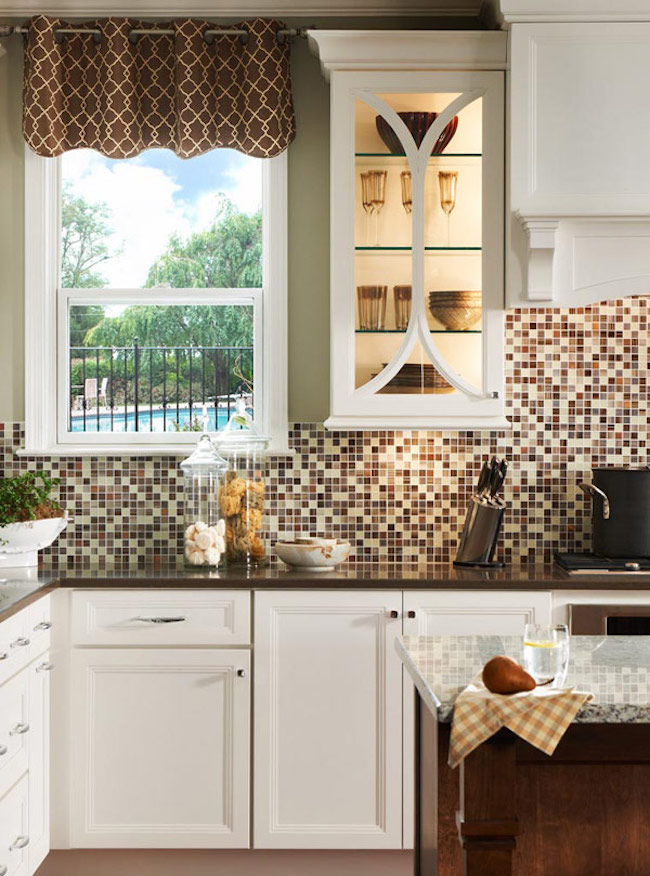
For those looking to add value to their home, a mosaic backsplash can be an excellent investment. A beautifully designed backsplash can significantly increase the appeal of your kitchen, making it more attractive to potential buyers. The materials used, the quality of installation, and the overall design impact the resale value of a kitchen. Homes with eye-catching, unique features like mosaic backsplashes often stand out on the market. Whether you’re planning to sell or simply want to enjoy a more stylish kitchen, a mosaic backsplash is a relatively cost-effective upgrade with lasting value.
Designing a mosaic backsplash offers a chance to experiment with different color schemes and patterns. Choosing the right colors can make a huge difference in the overall look and feel of the kitchen. Bright colors like blue, green, or yellow can add an energizing pop, while neutral colors like beige, gray, or white provide a more subdued, elegant feel. If your kitchen has predominantly neutral tones, a colorful mosaic backsplash can create a stunning contrast. Alternatively, a monochromatic scheme with different shades of the same color adds depth without overwhelming the space.
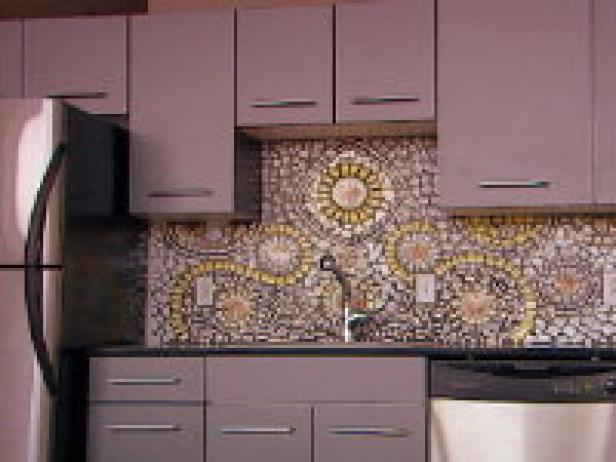
One interesting trend in mosaic backsplashes is the use of mixed materials. Combining glass with metal, stone with ceramic, or even adding accents like mirror tiles can create a dynamic, layered look. This approach adds texture and makes the backsplash a conversation piece in the kitchen. Mixed-material mosaics are also practical, as they allow homeowners to enjoy the best qualities of each material. For instance, glass tiles bring brightness, while stone tiles add durability. By blending these materials, you create a unique, multifaceted aesthetic that complements various kitchen styles.
If you’re installing a mosaic backsplash yourself, having the right tools is essential. You’ll need a trowel, tile cutter, grout float, and a sponge, along with adhesive and grout. Before starting, practice laying out the tiles to get an idea of how they’ll look on the wall. Cutting tiles to fit around outlets and corners can be tricky, so take your time and measure carefully. Many mosaic tiles come in pre-assembled sheets, which make installation easier by ensuring consistent spacing and alignment. When in doubt, consulting with an expert or doing a test section can save you from potential mistakes later.
Grout selection is another important step in creating a cohesive mosaic backsplash. Grout color can either blend with the tiles or create contrast, depending on the look you’re going for. A grout color similar to the tile color gives a seamless, unified appearance, while a contrasting grout color highlights the individual tiles, emphasizing the mosaic pattern. It’s also crucial to use the right type of grout. Epoxy grout, for example, is more stain-resistant and durable than traditional cement grout, making it ideal for kitchens where spills and stains are common.

Lighting is an often-overlooked aspect of mosaic backsplashes but can make a significant difference. Under-cabinet lighting, in particular, can highlight the tiles’ color and texture, creating a warm and inviting atmosphere. Glass and glossy ceramic tiles reflect light, enhancing the effect even further. You might also consider LED strip lights or puck lights under cabinets to cast a soft glow over the mosaic, which brings out its colors and makes the entire kitchen feel cozier.
A mosaic backsplash can serve as a centerpiece, balancing other kitchen design elements. When planning a kitchen remodel, consider the backsplash alongside other features, such as countertops, cabinets, and flooring, to create a harmonious design. If your cabinets are dark, a light or bright mosaic backsplash can provide contrast and prevent the kitchen from feeling too heavy. Conversely, if the kitchen is mostly light, a darker, patterned mosaic adds depth and richness, making the space feel well-rounded and cohesive.
Maintaining a mosaic backsplash is relatively simple but requires attention to the materials used. While glass and ceramic tiles are low-maintenance, natural stone tiles need periodic resealing to stay stain-resistant. When cleaning, avoid abrasive sponges or harsh chemicals, as these can damage certain tiles, especially natural stones. Mild dish soap and water are usually enough to keep the backsplash clean. Regular care not only preserves the look of the tiles but also ensures they remain an appealing feature in the kitchen.
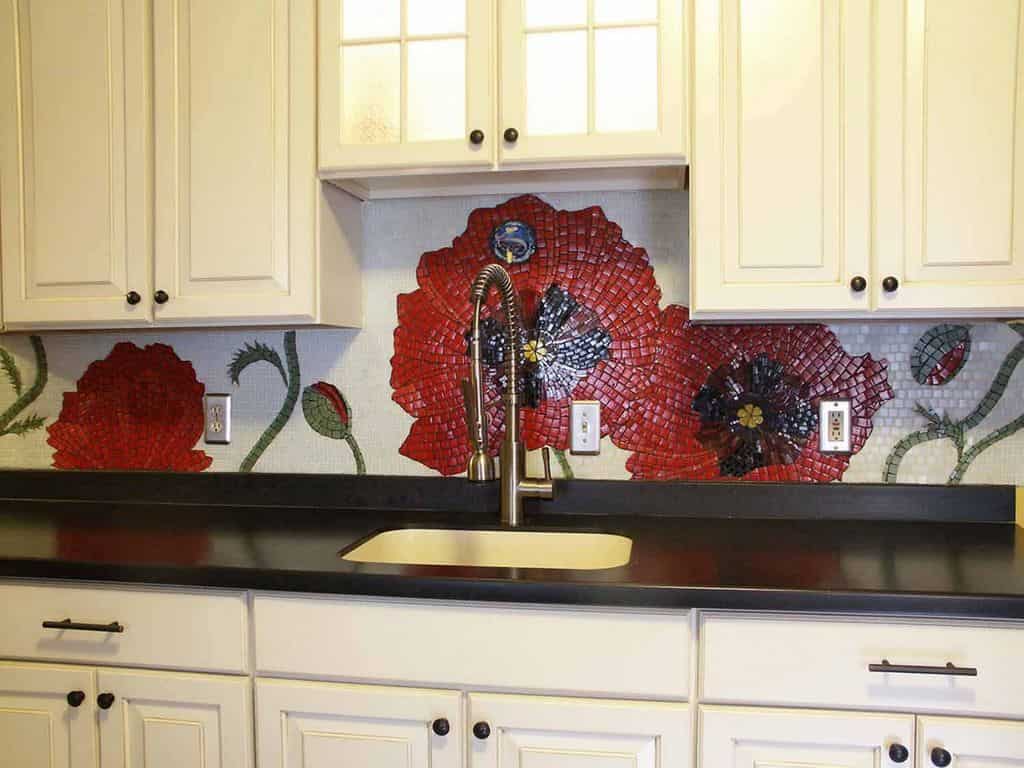
Mosaic backsplashes provide a creative outlet for personal expression, as the range of patterns and designs is virtually limitless. From classic subway patterns to intricate geometric designs or even custom images, a mosaic can be as simple or elaborate as you desire. Using tiles in various shades of the same color creates an ombré effect, while combining different shapes (like hexagons, squares, or diamonds) adds a modern, eclectic twist. The flexibility in design makes mosaics popular among homeowners and designers alike, as there’s something to suit every taste and style.
Cost is an important consideration, as mosaic backsplashes can range from affordable to high-end, depending on the materials and complexity of the design. Glass and ceramic are generally less expensive, while marble, metal, or custom-made tiles are more costly. DIY installation can save on labor costs, but hiring a professional ensures a precise, polished finish. Deciding on a budget early in the process helps narrow down choices and avoid overspending. Balancing your desired aesthetic with your budget can yield a beautiful backsplash without compromising quality.
Ultimately, a mosaic kitchen backsplash is a practical and stylish addition that can personalize your kitchen and enhance its overall functionality. The backsplash protects walls from splashes and spills while adding a decorative element that elevates the kitchen’s design. Whether you choose a minimalist look or a vibrant, colorful mosaic, this feature reflects your unique taste and transforms the kitchen into a space that’s both beautiful and practical. By carefully selecting materials, colors, and patterns, a mosaic backsplash can become a long-lasting, cherished part of your home.
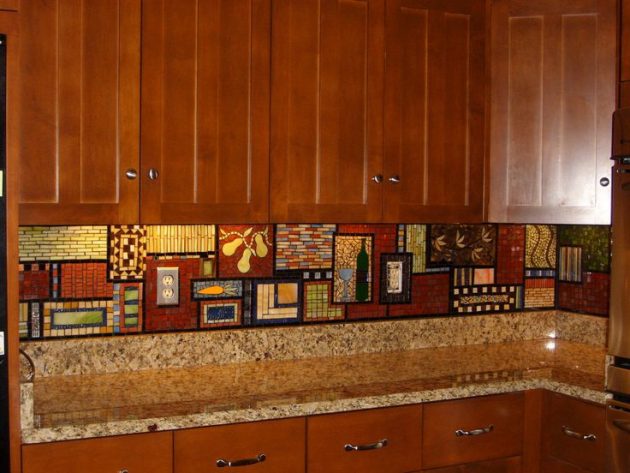
Common Mistakes to Avoid
One common mistake when installing a mosaic backsplash is not preparing the wall surface properly. It’s important to clean and smooth the wall before applying adhesive, as any bumps or dirt can interfere with the tiles’ adherence.
Another mistake is not using spacers, which can lead to uneven grout lines. Rushing through grouting without wiping off excess grout can also leave tiles looking dull and messy. Cutting tiles inaccurately, especially around outlets or edges, can lead to gaps or misalignment, detracting from the finished look. Lastly, not sealing the grout, particularly with porous tiles, can lead to stains over time.
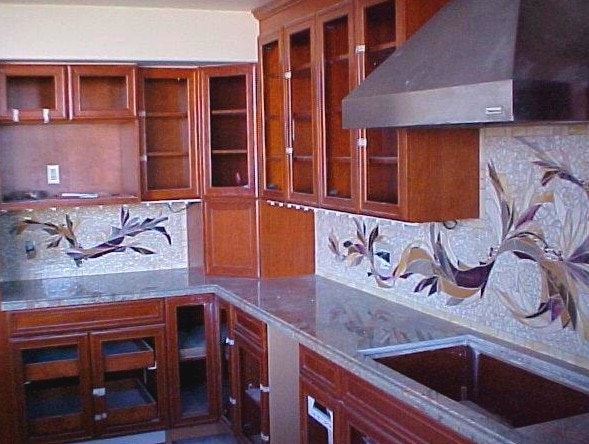
How long does it take to install a mosaic kitchen backsplash?
The installation time varies depending on the complexity of the design, but a typical mosaic backsplash can take between one and three days, including drying and curing times. A DIY project might take longer than a professional installation due to careful alignment and spacing needs.
Do mosaic backsplashes require special cleaning?
Cleaning a mosaic backsplash is generally straightforward, but it depends on the materials used. Glass and ceramic tiles are easy to wipe clean, while stone tiles may require sealing and gentler cleaning solutions. Regular maintenance can prevent buildup and keep the tiles looking fresh.
Can I install a mosaic backsplash over the existing tiles?
Yes, it’s possible to install a mosaic backsplash over existing tiles if they are in good condition and securely attached to the wall. However, the surface must be smooth and clean for proper adhesion, and a suitable adhesive for tile-over-tile applications is recommended.

How do I choose the right grout color for my mosaic backsplash?
Choosing the grout color depends on the effect you want. A matching grout color creates a cohesive look, while a contrasting color emphasizes the mosaic pattern. Neutral grout tones like white or gray are versatile and work with most designs, while bold colors can add extra dimension.
How often should grout be resealed in a mosaic backsplash?
Grout should typically be resealed every one to two years, especially in high-moisture areas like the kitchen. Regular sealing helps protect against stains and moisture, keeping the grout looking clean and the tiles well-protected.
Can I mix different tile materials in a mosaic backsplash?
Yes, mixing materials like glass, ceramic, and metal adds texture and visual interest. Combining materials allows you to play with contrast and create a unique design, but ensure that all materials are compatible and suited for kitchen environments.

Kitchen backsplash trends, Kitchen backsplash

Modern Matte Black Kitchen Backsplash – Mercury Mosaics

Related Posts:
- Green Glass Backsplash Kitchen Tile
- DIY Kitchen Backsplash Designs
- Hand Painted Tiles For Kitchen Backsplash
- How To Do A Kitchen Backsplash On A Budget
- How To Tile A Backsplash In Kitchen Video
- White Kitchen Cabinets Grey Backsplash
- Kitchen Penny Backsplash
- Glass Mosaic Kitchen Backsplash
- Top 10 DIY Kitchen Backsplash Ideas
- Kitchen Backsplash With Maple Cabinets